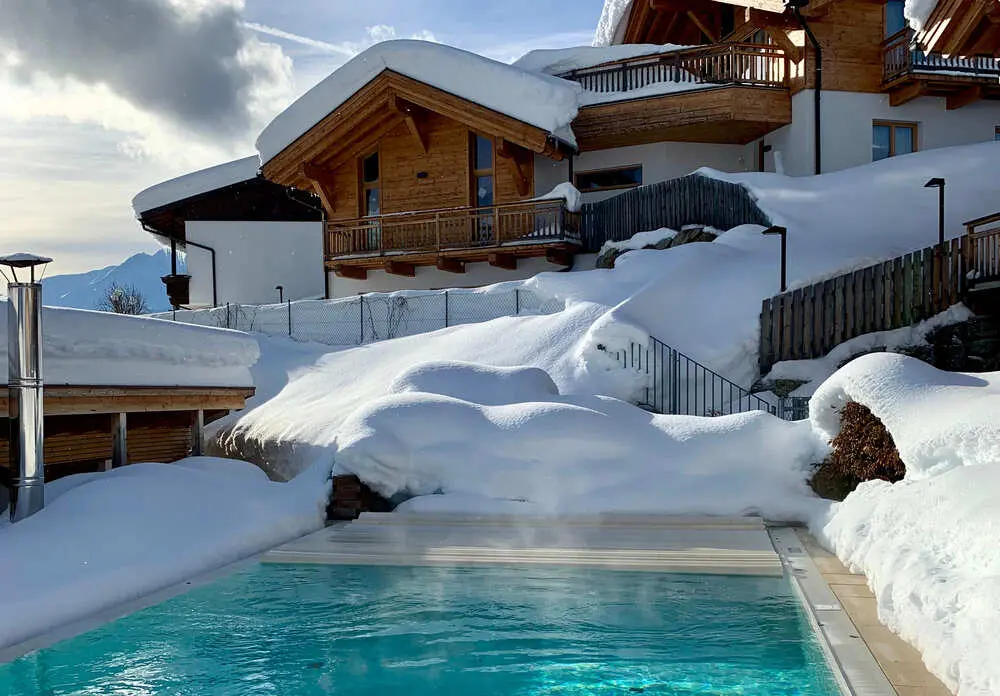
After a season full of guests having fun around the pool, cooling off from the hot sun and making memories, it’s important to protect your investment. For the onset of winter, a properly managed pool closing is essential for ensuring that your swimming pool stays in good shape for the next year.
Hotel guests, sports club users and resort visitors alike are becoming more demanding. Especially if it’s outdoor, they expect the pool they use in the summertime to be of high quality. Thankfully, there are steps you can take to make that happen, allowing the management team of your establishment to focus on other activities during the winter.
Typically, the outdoor pool in a leisure premises will be used less over the winter months so most establishments will benefit from closing it completely, reducing running costs and freeing staff up to perform other essential tasks.
A properly managed pool closing will safeguard it from cold temperatures which can adversely affect the integrity of the structure. Not doing so increases the possibility that frozen water (especially in areas with extremely cold winter months) causes extra stress on the structure of the pool and can cause the tiles to break, grout to disintegrate or degradation of the plastic lining. It can also affect the plumbing systems, causing fissures in tubes and connectors and if not properly cleared out, general equipment such as ladders.
Following this process each year lowers the likelihood of expensive and time-consuming repairs that put a business’s key attraction out of service during the most critical months. To winterise a pool, as it’s called in the business, there are some basic steps to follow that ensure proper maintenance during this season of downtime.
1. Clean and balance the chemistry of the water
The first step of the pool closing process is ensuring that the pool is thoroughly cleaned. To do this, those in charge of pool maintenance must remove any impurities like dirt, leaves and other debris from the water completely. They should then rigorously clean down the walls of the pool and floor with brushes and other cleaning equipment to avert the growth of algae during the winter months.
After having cleaned the structure and the walls of the pool, you will want to measure the presence of various chemicals in the water, and make adjustments accordingly. You should adjust the pH, calcium hardness and alkaline to within recommended levels. This is to prevent scale buildup, corrosion and other issues.
2. Take out pool accessories and drain them thoroughly
Next up in the important pool closing process is to remove all the removable equipment. This will include pool entry/exit ladders, diving boards and their fixtures and skimmer baskets that are used in the filtration system. This is particularly important in areas with hot summers and cold winters such as in central and eastern Europe and along the Eastern Seaboard of the US. This is because in climates where the temperature regularly goes below freezing, equipment can suffer degradation through the shock of different temperatures.
Further to removing these items from inside the pool, you will need to completely drain all of the equipment such as pumps, filters and heaters. This means ensuring that they are completely dry and stored somewhere away from the elements, avoiding the chance that they will be affected by rain, snow and ice. It’s an important step of pool maintenance in colder climates because residual water can freeze and potentially cause damage to the workings of the machinery.
3. Incorporate chemicals that aid in the winterisation
There are various winterisation chemicals available that can aid in the prevention of algae growth and keep the water quality at a certain required level. Even if your pool uses saltwater, these chemicals are vital for the maintenance of water quality throughout the winter. To prevent the water becoming putrefied and for bacteria to multiply, these products include bactericides, algaecides and flocculation aiding chemicals.
If necessary, performing shock treatment will help balance the chlorine to correct levels but should be something done before closing the pool for winter. Ideally, shock treatment should be done four or five days before pool closing. Experts recommend doing this at night as the sun’s UV rays can interfere with the process.
4. Cover the pool well
The final step in a pool closing is covering it well. The cover used for winter will be different to the one that many use on a daily basis as it is more laborious to place and remove. However, this is good news for the winter as you should plan to leave it there for several months. The benefit of a high-quality pool cover that fits tightly over the pool, properly anchored down, is that it will protect the water from debris and keep it at a stable temperature , reducing the possibility of it freezing.
We recommend a PVC winter pool cover as it helps avoid algae formation, evaporation of water and eventually reduces maintenance costs. Applying a quality cover means you can forgo the need for constant filtration and adding chemicals throughout the winter as the water is kept stable for the winter months. In a hotel, spa, sports club or other public premises, pool users will notice the difference in water quality when they return in the spring and can ensure that they keep coming back.
5. Opening the pool up again
As the spring returns, there are a few preparations that need to be made before the pool can be opened up for guests. Firstly, remove the winter cover, clean it thoroughly and store it somewhere safe and dry for the rest of the year. Reconnect all the equipment you took off at the beginning of the pool closing procedure; reattach the ladders, the diving boards, the pumps, the heaters and any other plugs and pipes. Before letting anyone in, testing the water’s chemistry is an essential safety step . Use the results of these tests to make any necessary adjustments.

For the pool to be in tip top condition for guests to use when spring comes, there are some maintenance steps that staff can take over the winter while the pool is closed.
1. Check the pool cover frequently
The pool cover should be checked every few days or weekly, keeping an eye out for damage to the material as well as areas where water, debris or snow accumulates. Removing debris quickly can prevent potential issues as it can cause build-up of water that freezes and weighs down the cover, potentially causing damage by stretching the material. Likewise, remove any snow that builds up on the cover to avoid unnecessary weight.
2. Prevent ice damage
In the middle of winter when there is a greater chance of ice buildup, avoid letting it break and crack as this can damage the liner, walls and cover of the pool. As the last defence against the harshness of winter, winterising plugs stop the flow of water, which is ideal. They can prevent expensive damage caused by ice expansion and are simply screwed into the return inlet.
3. Observe physical condition of pool
Finally, keep watch over the pool’s condition over the winter months so that any issues can be dealt with promptly, saving the need for costly repairs. Many businesses use smart devices that monitor changes and potential issues through a single automated device. Signs to look out for are water loss, physical damage or cloudy water.
As the frost begins to thaw and green buds return to the tips of tree branches, people begin to feel the temptation of having a dip in a pool. Extending the time when the pool is available for use can attract more customers to a hotel, spa or sports club. To do so, there are ways to make the pool suitable for a long period of use.
One of the most effective and obvious ways is to invest in a heater. Many climates like in the UK will probably be using a pool heater year-round anyway. However, warmer locations may only need to keep it on during early Spring and late Autumn. Pool heaters can automatically regulate the water temperature , ensuring a comfortable level whatever the weather. Nowadays there are several types available, including solar heaters and gas heaters , but the most efficient solution are heat pumps, which employ the thermal energy present in the air.
Another environmentally-friendly option is a solar or thermal pool cover which harnesses the power of the sun to heat up your pool while it is not being used, extending the useability by months. A further option is to install an insulated enclosure round the pool that protects it from the elements and makes it useable all-year-round.
These several steps over this important period can increase the life of a pool and make it useable by guests and customers for much longer. By focusing on the cleanliness and attractiveness of the pool there are ample opportunities to increase business and raise earnings throughout these crucial seasons.
